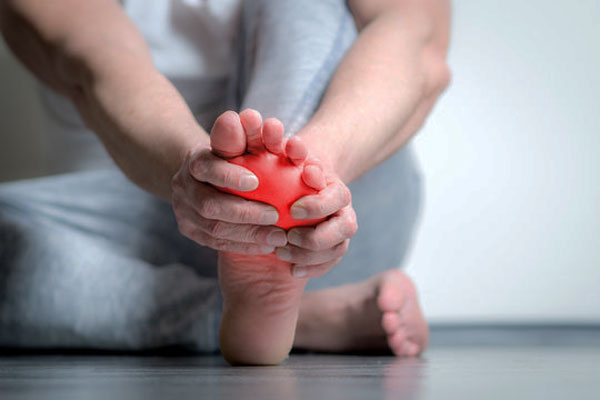Bone Fusion Surgery in Foot
What is a bone fusion surgery for the foot?
The bones and joints of the human foot are well-designed to walk, run, jump, and spin. However, excessive use of these joints, misalignment, or instability of the bones and joints can result in cartilage damage, persistent pain, and arthritis. In such cases, fusion surgery may be helpful.
Foot fusion surgery involves the permanent fusion of the bones in the foot. This surgery makes the foot a little stiffer, which, however, does not impact movement as the joints in the midfoot and hindfoot do not move very much.

Why is a bone fusion surgery in the foot done?
Foot fusion surgery is used to treat the following conditions of the foot:
- Flat feet
- Arthritis, including rheumatoid arthritis
- Fractures that have not healed properly
- Fractures caused by the wear and tear of cartilage with excessive use
What are the pre-procedure care for the surgery?
The following preparative measures should be taken by the patient before undergoing the surgery:
- Do not smoke or drink for a few weeks before and after the surgery, as it can delay the healing process.
- Do not take anti-inflammatory medicines for 5 days before the surgery, as these medicines can increase the risk of bleeding.
- Do not eat or drink anything the night before the surgery.
- On the day of surgery, take only the necessary medicines with a sip of water.
- Arrange for someone to support you at home after discharge.
- Arrange for someone to drive back home.
How is the bone fusion surgery of the foot performed?
The foot fusion surgery is performed under general anesthesia or regional anesthesia to prevent pain.
The type of fusion surgery depends on the part of the foot that is involved in repeated motion.
- Hindfoot fusion: It involves the fusion of one or more joints of the hindfoot section. Only one incision (cut) is made if only the subtalar joint is to be fused. If more than one joint is involved, an additional incision is made on the inside of the foot. Upon removing the damaged cartilage and aligning the bones and joints, metal screws are used to keep the bones in place and allow proper fusion.
- Midfoot fusion: This procedure involves the fusion of one or more joints in the midfoot region. In some cases, all the joints may be fused together. The surgeon makes an incision and removes the damaged cartilage, realigns the bones, and inserts screws or plates to keep the bones in place and allow for healing. This fusion addresses the problems of the joints and bones of the midfoot that form the foot’s arch.
During the procedure, the surgical team uses X-rays to ensure proper positioning.
A post-operative local anesthetic may be administered to the foot to reduce pain.
After the surgery, the treated foot is placed in a plaster cast for about 12 weeks. However, a light-weight cast may be used to replace the initial cast anytime during the first 2 to 6 weeks.
What is the post-procedure care?
The patient may have to stay for a few days in the hospital. During this period, the medical staff will teach about how to use the crutches and give advice on certain exercises to help in a speedy recovery, maintain flexibility, and improve muscle strength.
Some of the measures to be taken during recovery are:
- For the first 2 weeks, do not put weight on the foot and keep the foot elevated whenever possible. Perform stretching exercises as suggested by the physiotherapist.
- After 6 weeks: Once the x-rays confirm that the bones have healed correctly, the person can put weight on the foot using the surgical sandals provided. Start massaging around the scar whenever possible. This can be painful, but it increases the density of the scar and prevents the tissues from sticking to each other.
- After 12 weeks, the joints will completely fuse, allowing the person to carry out normal activities.
The person can return to heavy activities gradually after 6 months after the surgery. However, it takes nearly a year for complete healing and a reduction in swelling.
It is not necessary to remove the plates and screws used for the fusion; however, if they are causing pain or skin irritation, they can be removed after complete healing.
What are the complications associated with the surgery?
As with other surgeries, this one can led to the following complications:
- Infection
- Bleeding
- Blood clots
- Problems related to anesthesia and other medications
- Damage to the blood vessels and nerves
Other complications may include:
- Irritation from the surgical hardware
- Misalignment of the bones after fusion
- Incomplete fusion
